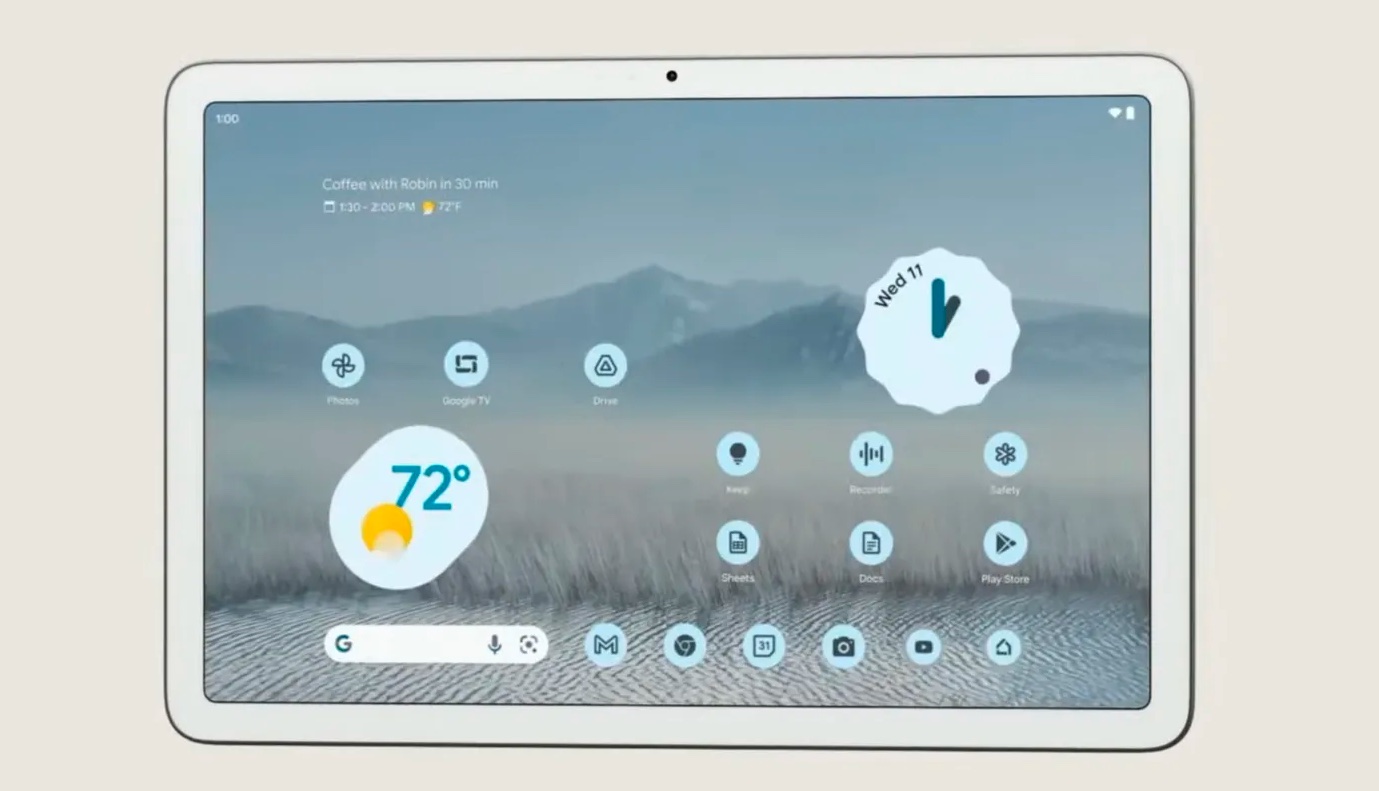Google Pixel Tablet specs just tipped — here’s what to expect
The Pixel Tablet could be a mid-range, spiritual successor to the Nexus 7

The Google Pixel Tablet has been official since Google I/O 2022 — albeit with a long lead time. Google has already said that the company’s first tablet since the ill-fated Pixel Slate won’t be coming until 2023, but is yet to say anything about its specs and key selling points.
However, the developer Kuba Wojciechowski has managed to find some details about the tablet by digging through AOSP code, and taken together they point to a device that’s possibly targeting the low-to-midrange market, rather than the iPad Pros and Samsung Galaxy Tab S8 tablets of this world.
Rather than embracing the latest version of the Google Tensor system-on-a-chip, for example, it seems that the Pixel Tablet is going to stick with the first-generation chip that powered the Google Pixel 6 and Pixel 6 Pro. While these chips aren’t exactly slow, they will be over a year old by the time the tablet rolls around — and possibly a lot more if “2023” means “Holiday 2023."
Likewise, the tablet appears to have just 4GB RAM, which is on the low end — especially when you consider that the entry-level Google Pixel 6a managed 6GB in its $449 package. And while few use tablets for photography, it’s interesting to note that both the front and back sensors appear to be the IMX355 hardware from the Pixel 6’s selfie cam.
Perhaps most intriguingly, the Pixel Tablet doesn’t appear to have support for GPS or cellular data at all. It’s probably Wi-Fi only, and clearly only intended for use around the house. “The code also confirms the lack of proximity and barometer sensors, as well as lack of support for ‘high-fidelity’ sensor processing,” Wojciechowski writes.
In fact, it may well be that the Pixel Tablet, while obviously handheld, is only intended for occasional portability. Wojciechowski finds evidence that earlier reports of an upcoming Google tablet moonlighting as a kind of detachable Nest Hub appear to be correct.
“The code Google has added in their proprietary code over Android seems to also confirm the story,” he writes. “Google’s hardware team seems to have fully embraced the idea and designed the device around that concept.”
Sign up to get the BEST of Tom's Guide direct to your inbox.
Get instant access to breaking news, the hottest reviews, great deals and helpful tips.
Like the keenly priced Tensor-powered Pixel phones, it appears that Google aims to avoid a direct fight with the premium end of the best tablet market, and instead compete in the midrange via some sensible if unorthodox design decisions.
It feels a bit like reviving the Nexus spirit — devices that are well designed, with specs that are ‘good enough’ and with an appealing price. With the cost-of-living crisis beginning to bite, that strategy could well prove a masterstroke.
Freelance contributor Alan has been writing about tech for over a decade, covering phones, drones and everything in between. Previously Deputy Editor of tech site Alphr, his words are found all over the web and in the occasional magazine too. When not weighing up the pros and cons of the latest smartwatch, you'll probably find him tackling his ever-growing games backlog. Or, more likely, playing Spelunky for the millionth time.

